Remote Control Center of Gravity Machine
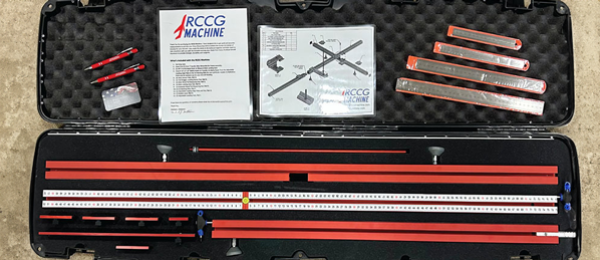
Remote Control Center of Gravity Machine
Balance any model, regardless of size, with precision
By | [email protected] Photos by the author
As seen in the May 2024 issue of Model Aviation.
THE REMOTE CONTROL Center of Gravity Machine (RCCG Machine) was designed and engineered by Michael Matteson of Macedon, New York. Michael loves to build and fly RC aircraft. He uses the Xicoy Digital Weight and Balance system to properly balance his models’ center of gravity (CG). The last step before sending an aircraft airborne is to make sure that it is properly balanced, because the consequences of a poorly balanced model can be disastrous. In order to explain how Michael’s RCCG Machine aids in this process, I’ll first offer a basic description of how the Xicoy system works.
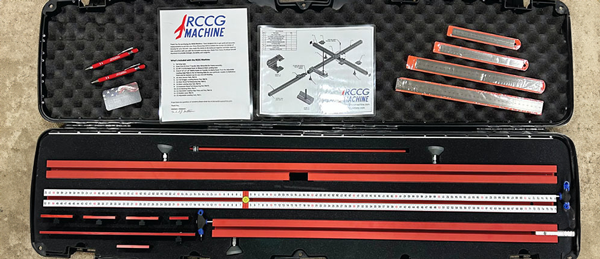
The complete contents of the RCCG Machine include the assembly tools and a nice storage and carrying case.
The Xicoy Digital Weight and Balance meter uses full-scale aircraft technology to balance any model with precision, regardless of size. It includes three high-precision puck scales that are sensitive to 1 gram and a color touchscreen. All three pucks are wired to the touchscreen, which utilizes a battery pack to power the system. The pucks are placed under each wheel, whether the model has a nose gear or tailwheel. It will display the aircraft’s total weight, current CG position, and calculate the weight needed at any given point instructed to establish proper CG. In order to accomplish this, you will need to input a few requested dimensions using the touchscreen.
Note that neither the RCCG Machine nor the Xicoy System determine the CG of any model. The CG is predetermined by the designer and can be found on the plans or in the instructions that come with the model. If you’re interested in how to determine the CG of any given aircraft, there are equations that you can use to accomplish this. Simply use your favorite search engine and you can find everything you need online. Good luck!
Back to Michael and his RCCG Machine. He stated the following:
"The idea came to me as I lay awake one night at 2 a.m. When I first used the Xicoy, I thought that there needed to be a better way to acquire the measurements to enter onto the touchscreen. I found that after setting up a place to put the airplane on the sensors, you then needed painter’s tape, a level, a laser level, etc., and, in some cases, a plumb bob.
"By the time you set everything up, mark your laser lines, and get your measurements, it can take up to 30 minutes. So, a design came to mind to make this job much faster and easier while maintaining accuracy.
"I started out by ordering some aluminum extrusions with various parts. I have a friend who has a machine shop [and he helped] me fabricate the sensor pads.
"It took me several hours of time and labor to reimagine the device before an actual prototype was made at the tool and die shop. After many revisions, tests, and making the product as professional as possible, I was finally able to have the initial working unit. I can now offer a product to modelers who will enjoy many years of use and save a lot of time by easily and accurately providing the measurements for the Xicoy."
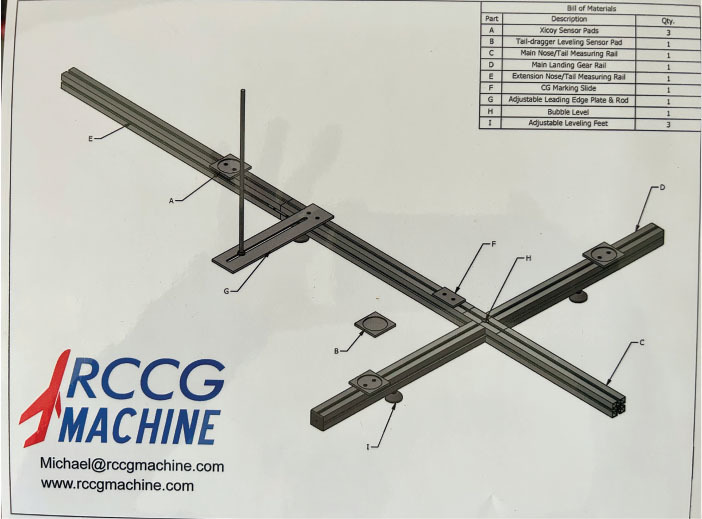
The included assembly drawing shows how it goes together.
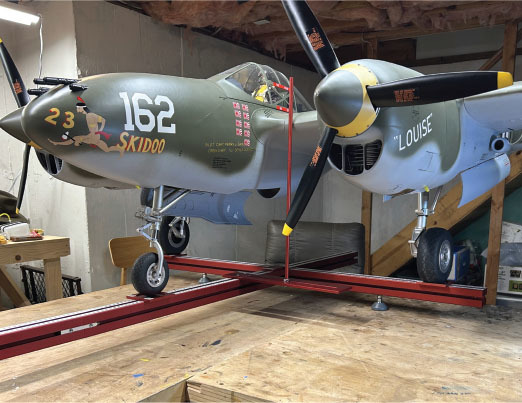
Test-fitting a model on the pads. Note the leading edge upright rod.
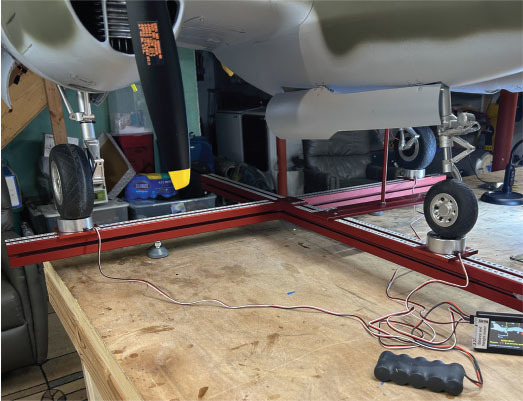
The P-38 is mounted on the Xicoy puck scale.
The RCCG system arrives in a nice, protective case that has a soft foam interior with exact cutouts for each part of the system, including any tools needed to assemble the unit and any rulers that you might use. Also enclosed were the bill of materials, an assembly diagram, and instructions. These were laminated in clear plastic for longevity. The main supports include adjustable feet and a bubble level so that you can place a model on a stable, level platform.
Using the diagram, it took only minutes to assemble everything. This included the three moveable Xicoy pucks, the CG marking slide, the adjustable leading edge (LE) plate, and the vertical LE rod. The next step was to measure the distance between the main landing gear wheels and adjust the Xicoy pucks on the rail to match. Once done, you’re ready to initiate/boot up the Xicoy system and place the three pucks onto the associated plates. The cutouts in the plates are precise, so you must ensure that the three Xicoy pucks are properly seated.
When the system is ready and all three pucks are in place, it’s time to place the model on them. It’s important to make sure that all three of the wheels are centered on the pucks. Now, simply follow the included instructions. The rails have rulers built in and you can use these dimensions for the Xicoy upload. You can also use the separate, individual, included rulers to double-check the measurements.
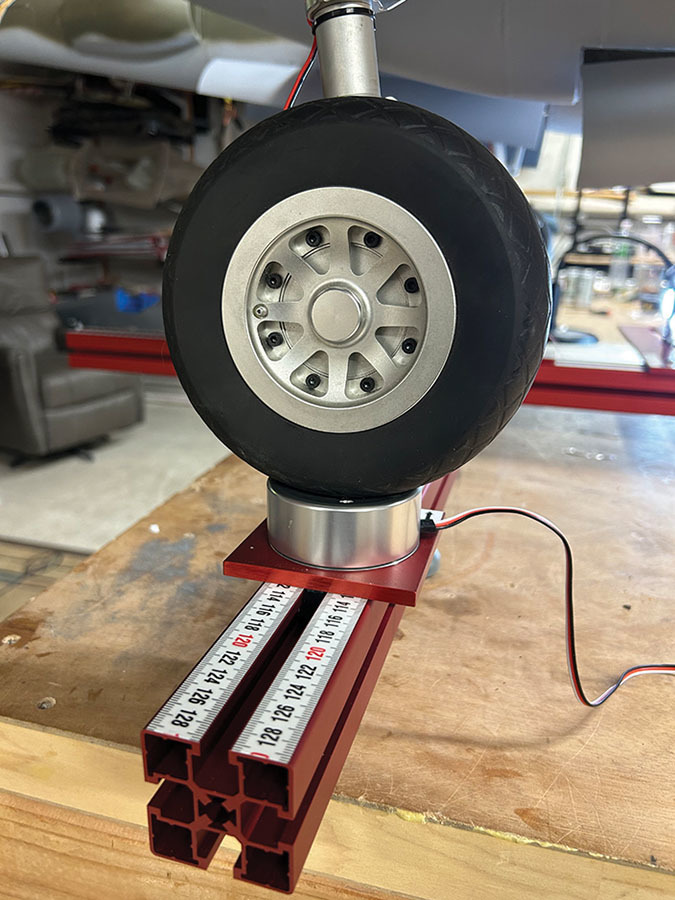
The proper nose-wheel alignment on the Xicoy puck.
After all of the requested dimensions are loaded in the system via the touchscreen, the results are shown. You will see the total weight of the aircraft and how much weight you will need to add at the given point that you selected. To further explain, if your model requires more weight, you will need to tell the Xicoy system exactly where you intend to add the weight. It will then tell you how much weight is needed.
The RCCG Machine is designed to accommodate model aircraft with a main landing gear separation of up to 48 inches. However, for those super-size models, Michael offers an accessory kit that expands the distance between the main landing gear to 64 inches.
In conclusion, the two systems, RCCG and Xicoy, complement each other nicely. The RCCG machine is available in three colors—blue, red, or silver—and has a price of $999.99. The accessory kit for extremely large models is available for an additional $250.
What Michael had envisioned at 2 a.m. early one morning does exactly what he intended. Like the old BASF Chemical Company advertisements of the past, "We don’t make the products you buy, we make the products you buy better." I believe Michael has done exactly that!
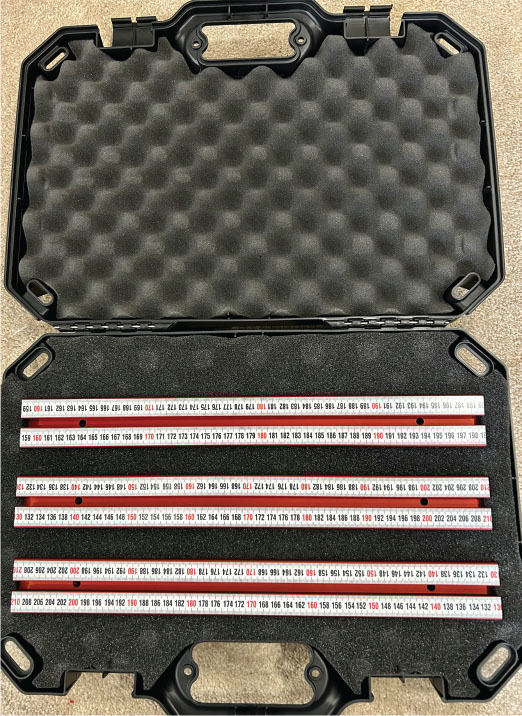
A separate accessory provides extensions for models with more than a 48-inch separation between the main landing gear.







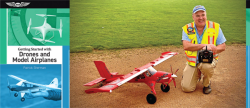
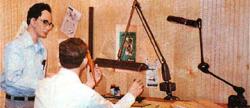

Add new comment